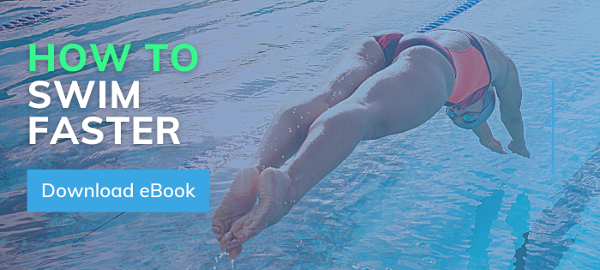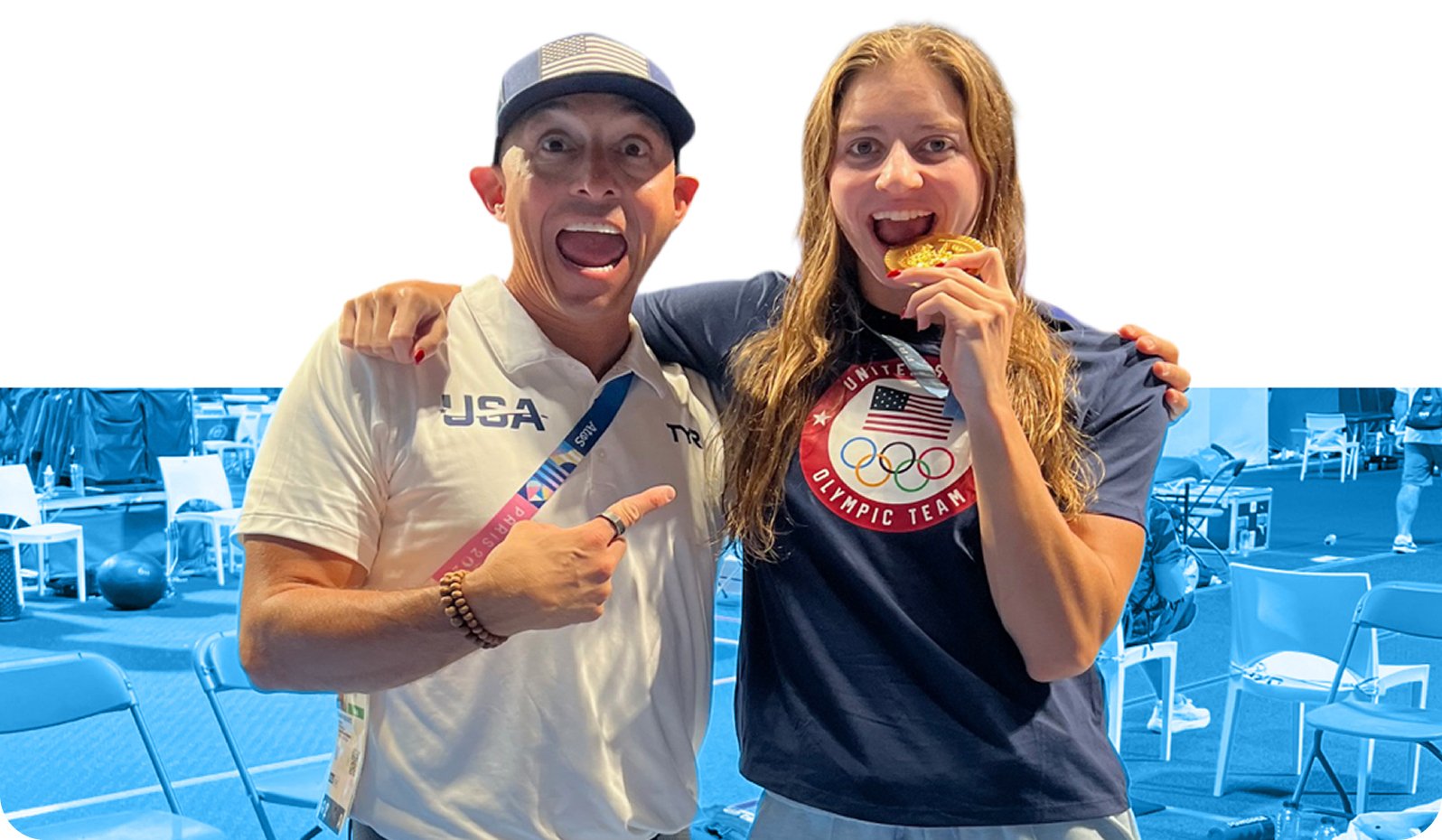Learn how to perfect transitions and shave time off, even if you have always been the one to slow down on each wall.
Mastering well-executed transitions can earn you up to a second each lap. Have you ever watched elite swimmers racing? They try to carry the speed off the wall for as long as possible, and it’s no coincidence. They have figured out that the fastest point of their race is the underwater phase. The great news? Anyone can learn!
In this blog, we will explore how to use metrics to measure and perfect transitions.
What is the TritonWear transition phase?
By the term transition phase, we mean ALL the points of change in and out of swimming, including starts, turns, push-offs and finishes. The Focus score is calculated from over 30 metrics divided into three phases: Overwater, Underwater, and Transitions.
Learn more about: The 3 Phases of Swimming
When it comes to swimming efficiency, there is no one size fits all solution. Surely improving your transition time is important, but how do you measure it? TritonWear Focus will give you an overall score, individual stroke scores and specific phase scores rating how well you have executed your skills relative to your usual performance.
How to perfect transitions?
To improve your turns, you can track your performance using specific metrics (Transition Time, Turn Time, Push Time, Push Max Acceleration and Push Strength) and compare them to your recent averages.
Improve your Turn Time.
Turn Time is a crucial part of your overall time, and optimizing this metric can help you win races.
Turn Time is the amount of time between the initiation and end of a turn. The goal is to switch directions during your turn as fast as possible. For flip turns, this is calculated by measuring from the beginning of the turn’s initiation (when the head begins to angle downward) until the feet hit the wall. For open or crossover turns, turn time is calculated from the hand touching the wall until the feet hit the wall.
Here are our foolproof tips to help you minimize your turn time.
Flip-turns
- Use the pool markings. When it comes to landing on the wall properly, the ‘’T’’ mark at the bottom of the pool is your friend. The general rule of thumb is taking the last stroke over the T before initiating the freestyle turn. The number of strokes needed will largely depend on your height. Do a couple of practice tests, counting the number of strokes required from the T to the wall.
- For the backstroke turn, use the flags and start counting the strokes needed to reach the wall. Take that total number and subtract one or two strokes. For example, if it took you five strokes to get to the wall, try taking three strokes before initiating the turn. If you are too far, add a stroke; if you are too close, subtract one.
- Don’t slow down on the walls. Often enough, turns feel like an opportunity to take a break. As a result, we tend to slow down or even lift the head to check for the wall. That loving gaze on the wall negatively impacts your turn time. Besides, the wall is always there; trust me.
- Don’t breathe in and out of the flags. Yes, coaches get paid to torture. At least, that is how you feel every time they ask you not to breathe into the walls. But, the truth is that by not breathing inside the flags, you maintain speed in and out of your freestyle turns.
- Bend at the waist. First, your head must follow your hand into the turn, chin down, bend at the waist with your knees to the chest. Bending at the waist will help you get your feet on the wall instantaneously and with little effort required.
-
Open Turns
- Don’t breathe on your last stroke. Instead, on the last stroke of your butterfly, keep your head down and accelerate to the wall. It will help keep your body in line and reduce drag.
- Move back, not up. When your hands land on the wall (during the butterfly or breaststroke turn), keep your head and eyes down to avoid sending your head and shoulders up and out of the water. The goal is to switch directions fast, maintaining a straight line.
- Don’t push off shallow. Instead, get your arms off the wall as fast as you can. Then, as your legs go up to the wall, drop one elbow under the water while bringing the other arm on top of the water.
Train an explosive push-off.
Do you find yourself trying to catch up with your opponents or teammates after each wall? Stay ahead (of the race or your lane) by training an explosive push-off. The first few meters after the wall is the fastest part of your swim lap.
For an explosive push-off, the goal is to minimize Push Time and maximize Push Strength.
Push Time is the time spent pushing off the wall.
Push Strength is a measure of total acceleration the moment the feet leave the wall. Gravity, type of turn and quality of streamline can all impact your push strength.
- Gravity. If your head is tilted down (with the chin tilted towards the chest) during your push-off, the Push Strength will appear oddly low in comparison to your underwater time. If the opposite occurs, where your head is tilted upwards, you will see a higher Push Strength value. A higher number here doesn’t mean a better number as it will have negatively impacted your Underwater Time and overall Stroke Count.
- Type of turn. An open turn will inherently show lower Push Strength values in comparison to flip turns. In this case, your Push Strength number will appear lower because you are at the surface during the turn and descend at the push-off point to execute the pullout.
On the contrary, a well-performed flip turn will have low drag force, high propulsion, and a higher Push Time on the wall. These factors all contribute to a fast exit velocity. In addition, higher drag is produced with exaggerated movements while the swimmer is on the wall. Higher resistance will consequently lead to a slower exit speed, even if your Push-Off Strength is high. - Quality of streamline. During the push-off, it is crucial to keep your head down to reduce drag. Keeping your chin tucked in will allow you to propel yourself forward while cutting through the water with ease. It is also essential to focus on a quality streamline, with your arms and elbows squeezed tight and your hands on top of one another. Streamlining is an efficient and effective technique designed to minimize resistance while increasing speed and ease of movement.
Besides a weak or improper push-off:
- It will impact your underwater.
- It will leave you struggling to reach a top speed.
Next, learn: Optimizing underwater swimming.

.png)



.png)

.png)